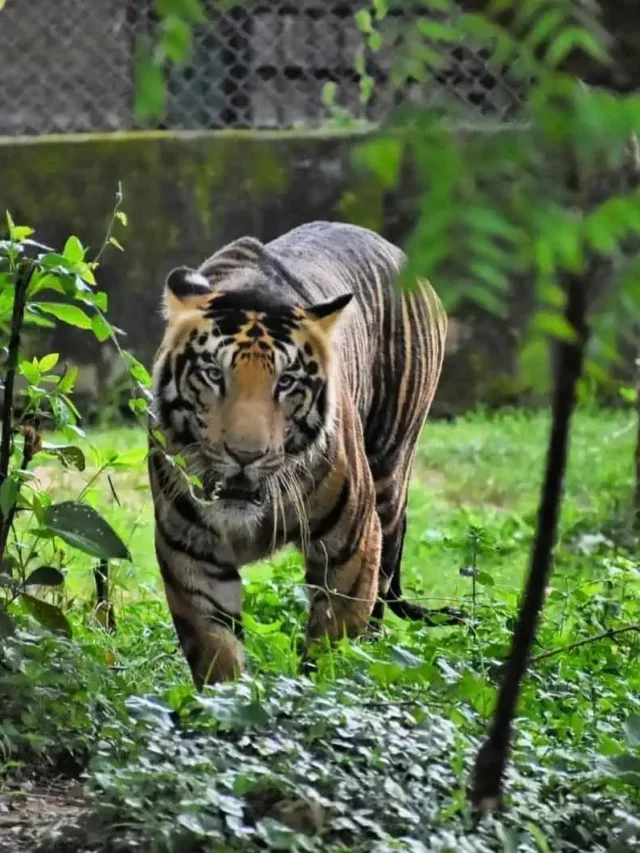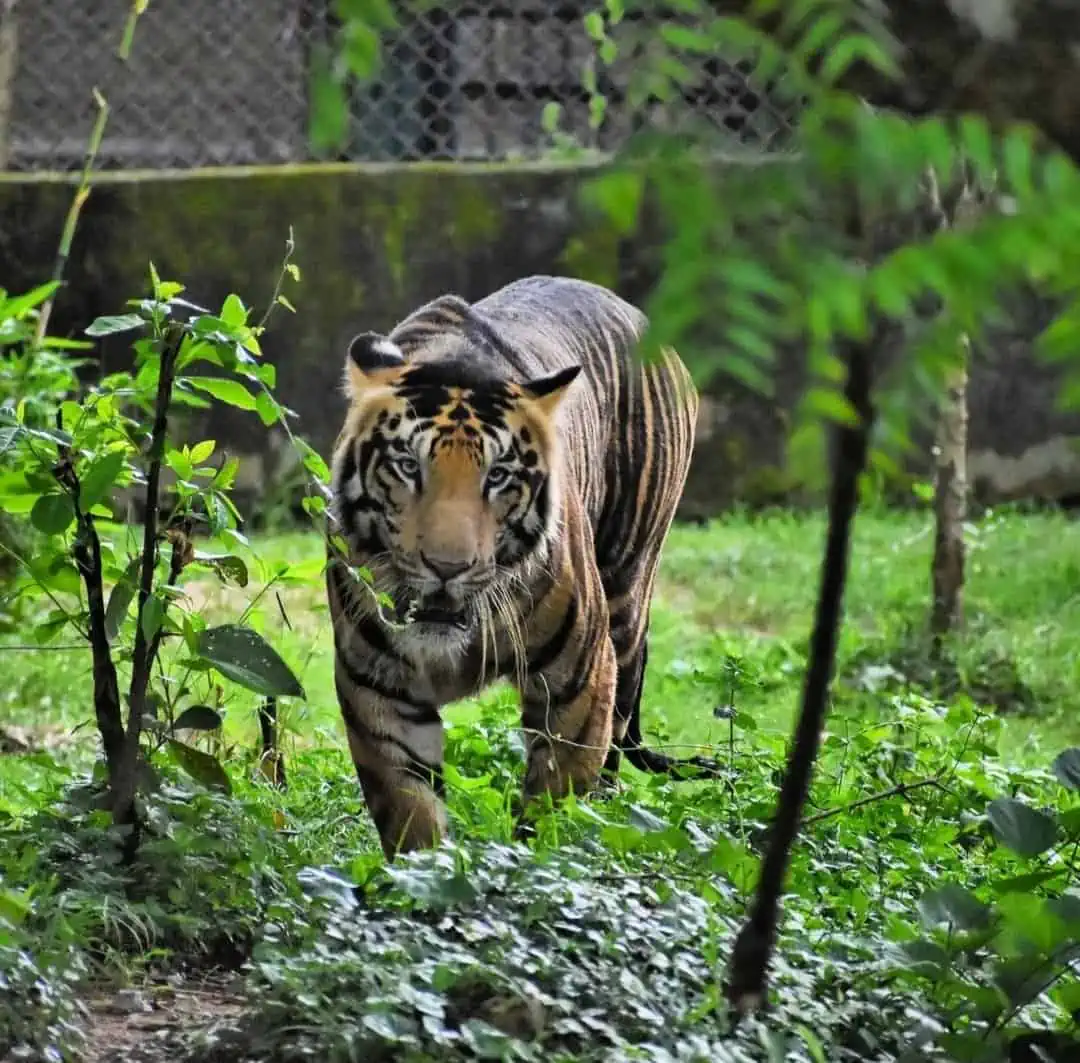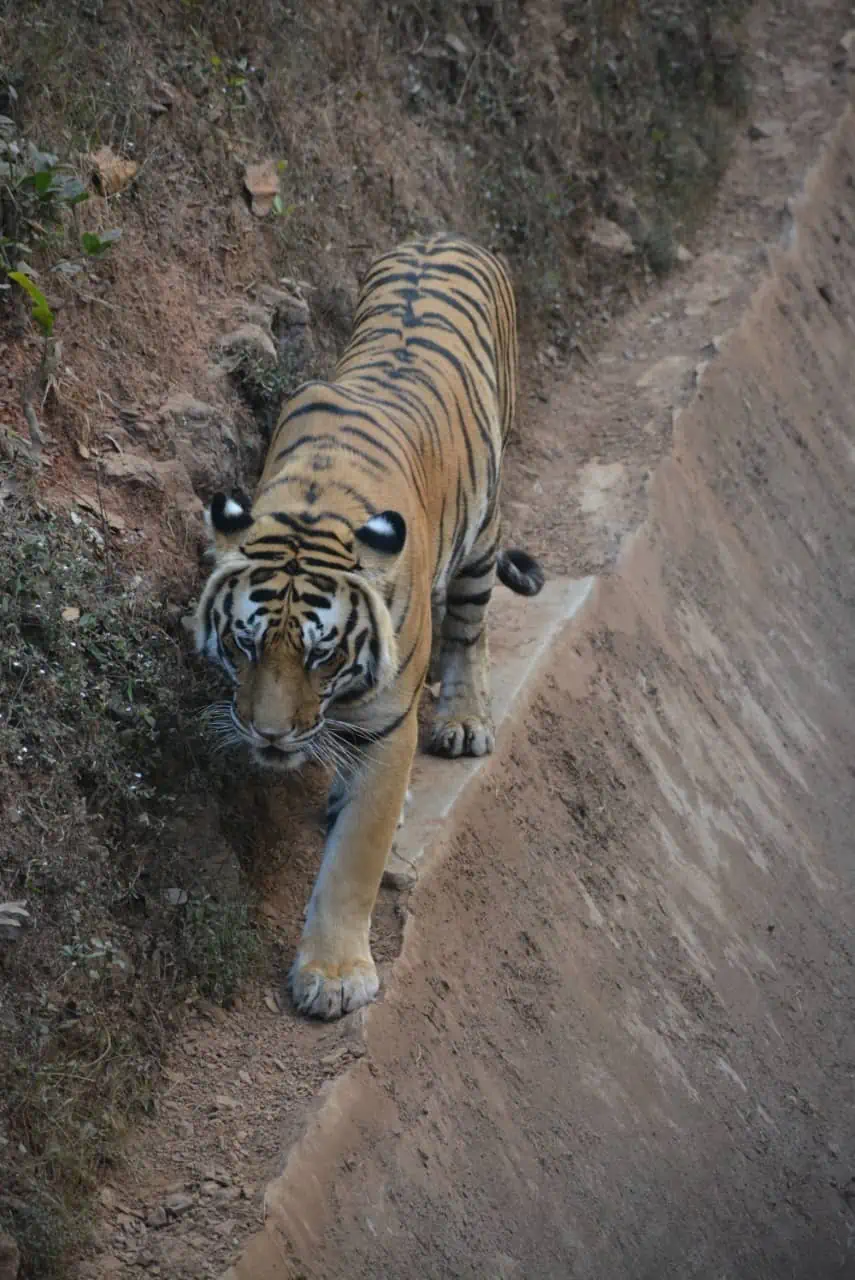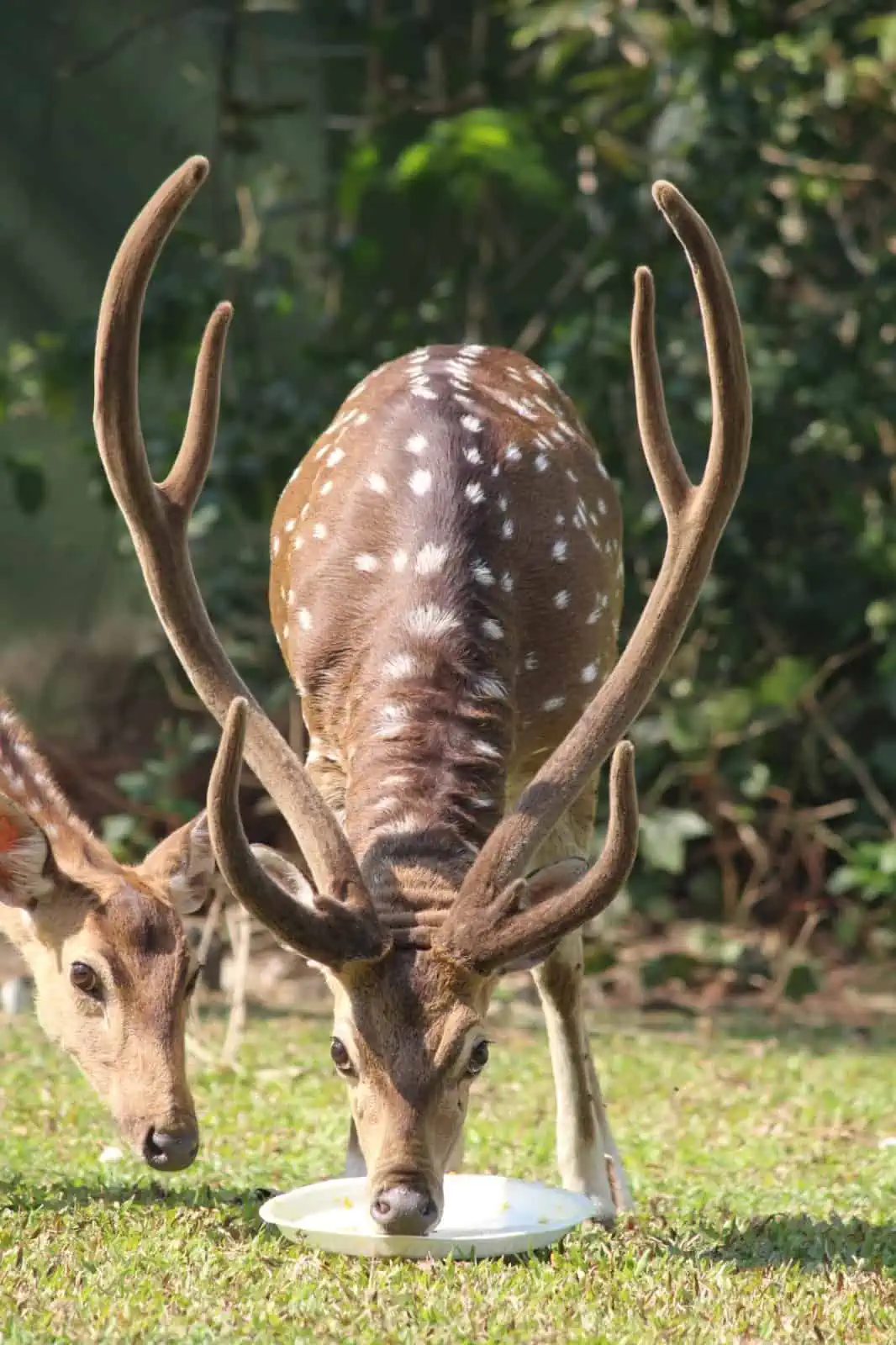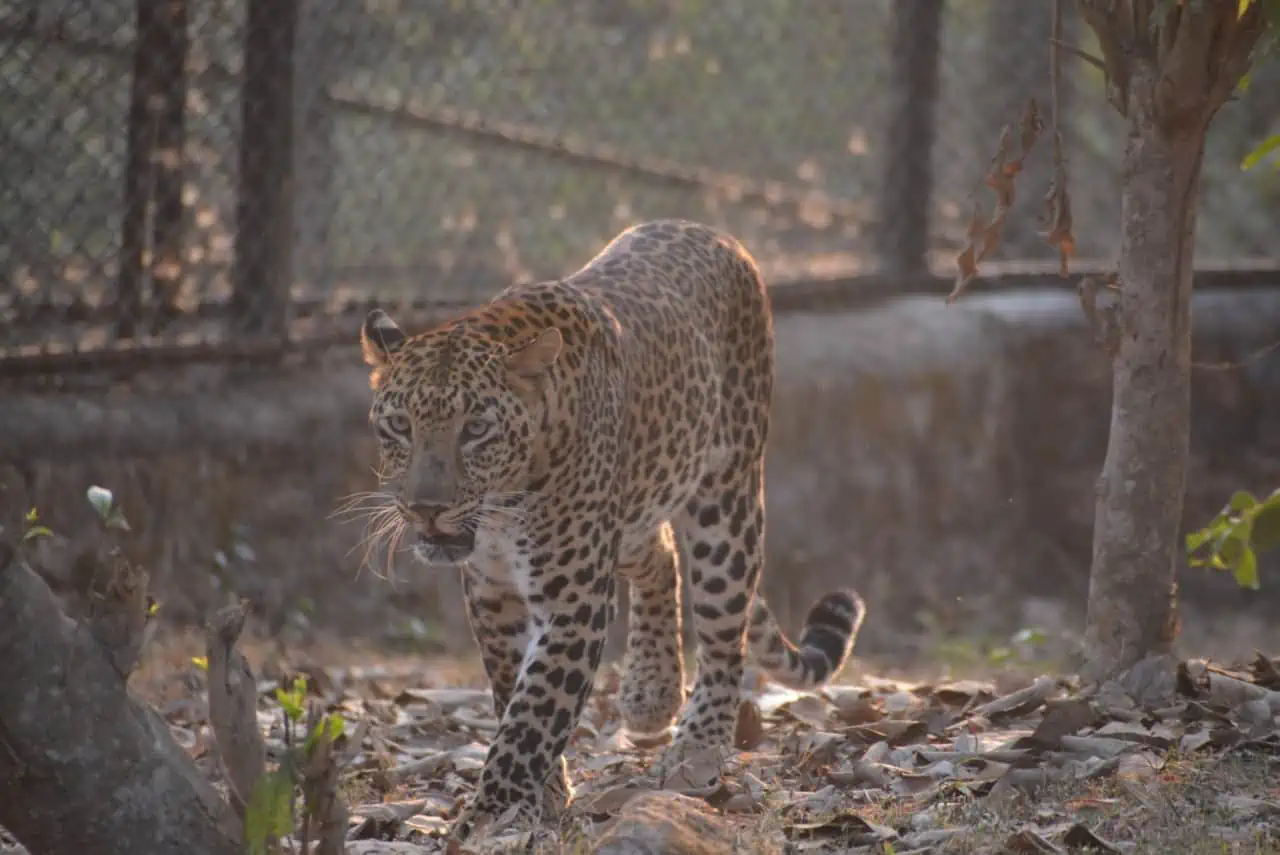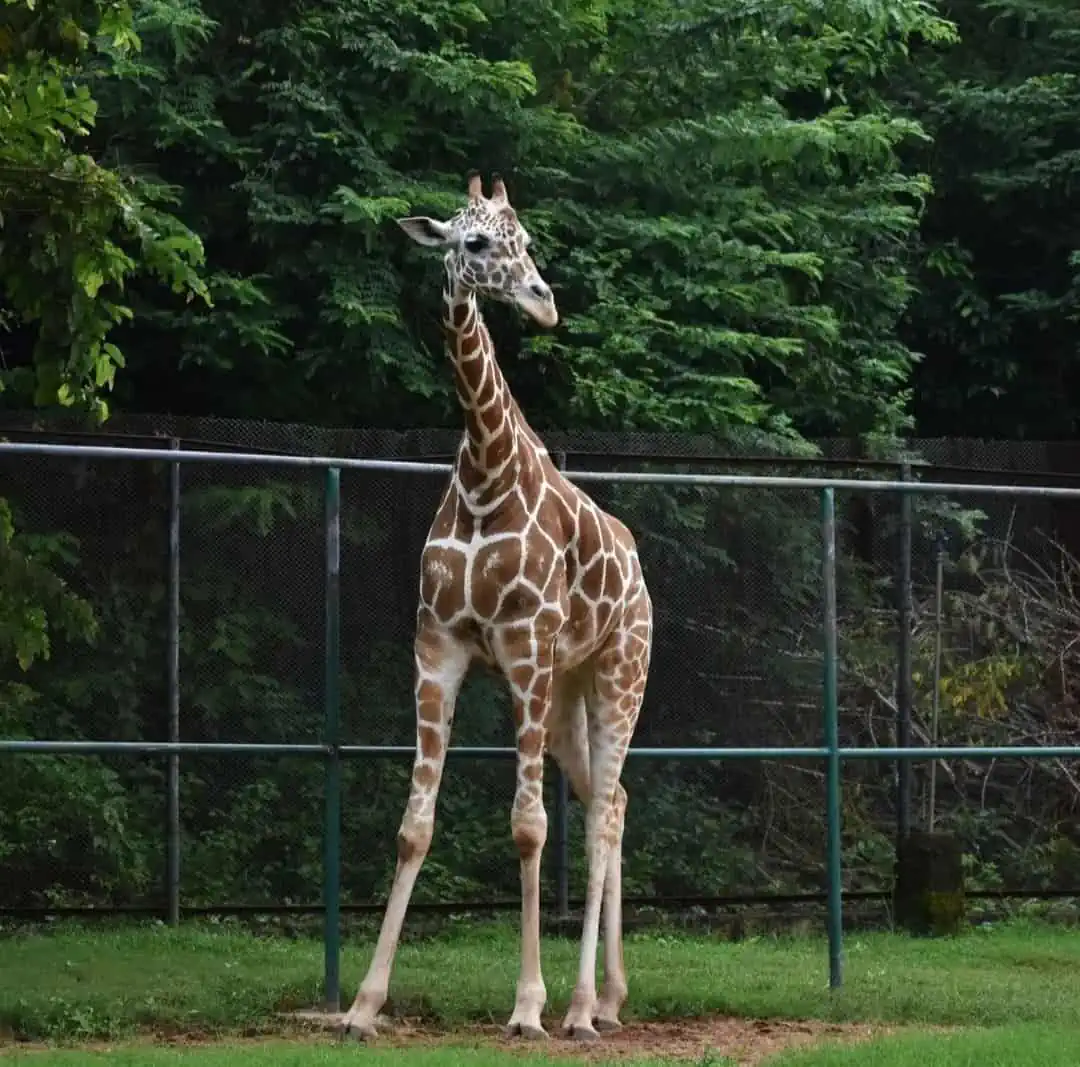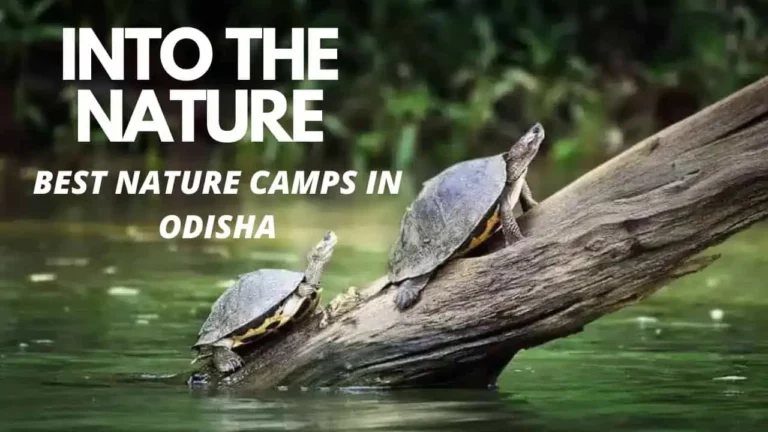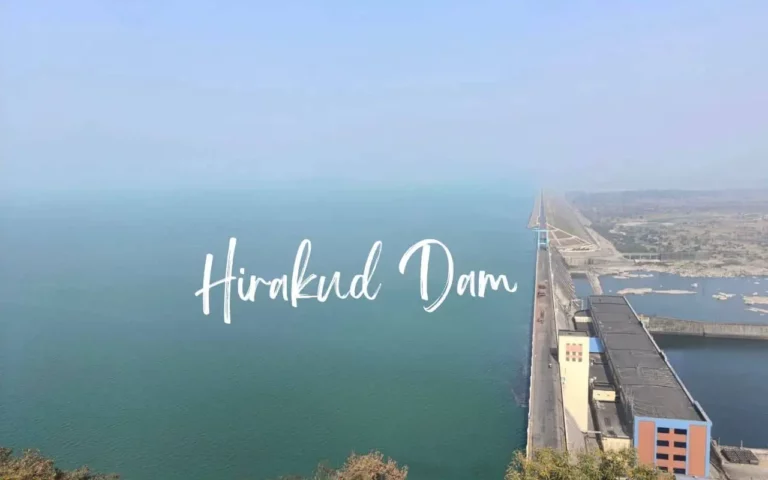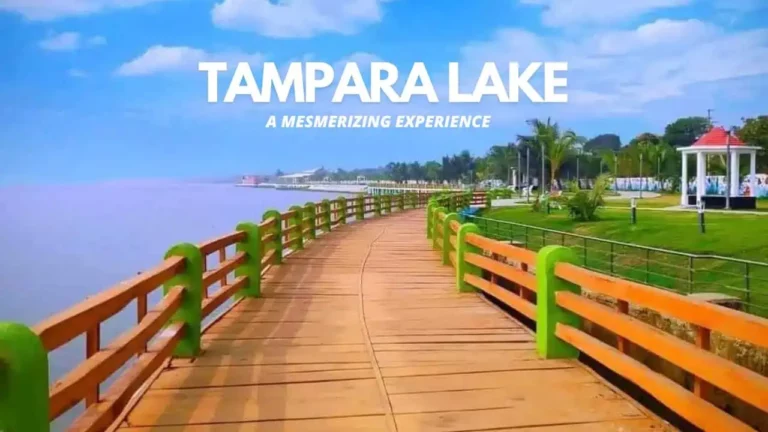Nandankanan Zoological Park Bhubaneswar Timings, Entry Fee, Ticket Price, Safari, Images, and Reviews
Nandankanan Zoological Park, located in Bhubaneswar, is one of the most popular tourist destinations. The park is home to a wide variety of animal species, including tigers, lions, elephants, and many more. It’s a perfect place for animal lovers and nature enthusiasts to explore and admire the beauty of the natural world.
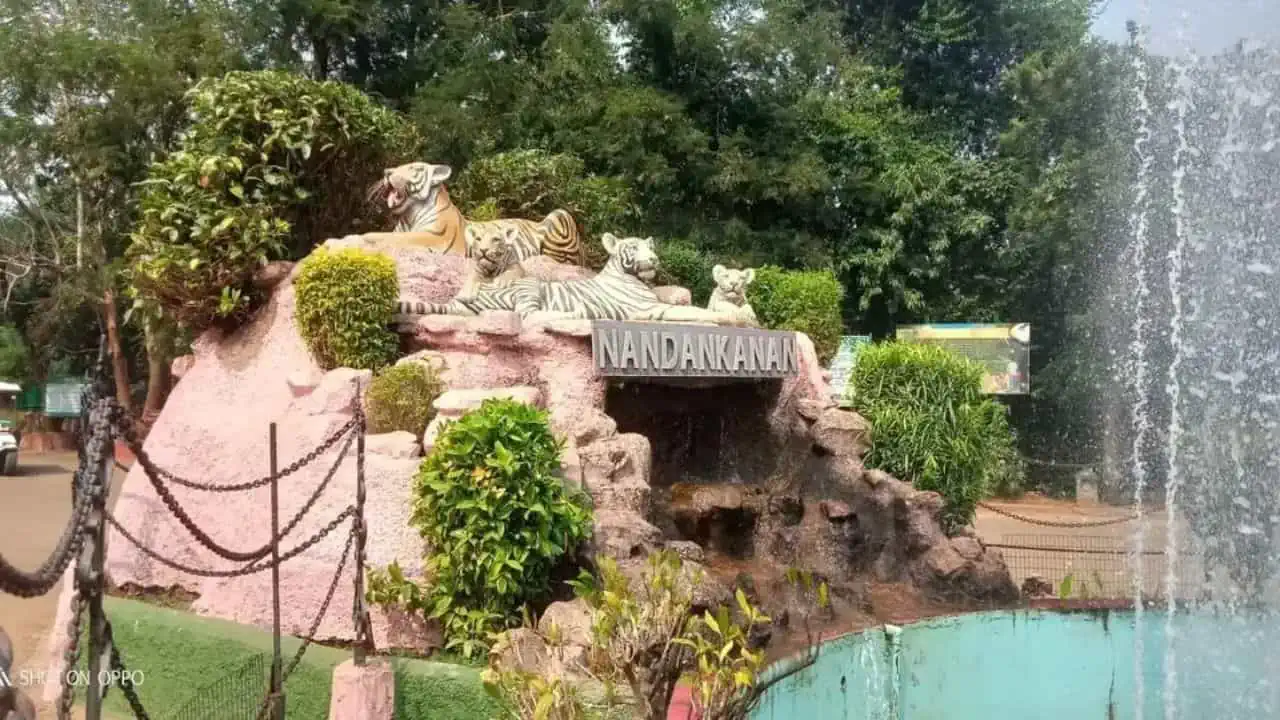
In this article, we will provide you with a comprehensive guide to Nandankanan Zoological Park, including details on timings, entry fees, tickets, safari, images, reviews, location, and contact information.
Consider reading: Top 11 Best Places to visit in Bhubaneswar
Nandankanan Zoological Park Timings
| Month | Hours | Closure Day |
|---|---|---|
| April to September | 07.30 hrs. to 17.30 hrs. | Monday |
| October to March | 08.00 hrs. to 17.00 hrs. | Monday |
Nandankanan Zoological Park Entry Fee, Ticket Price, and Parking Fee
Nandankanan Zoological Park, a popular wildlife sanctuary and botanical garden, offers various facilities and attractions to its visitors. Understanding the ticket pricing and parking fees can help you plan your visit more efficiently.
- Entry Fee:
- Adults (Above 12 years): ₹50
- Children (3 to 12 years): ₹10
- Foreign Nationals: ₹100
- Photography Charges:
- Handy-cam: ₹100
- High-end Video Camera: ₹500
- Movie Camera: ₹4000
- Children Facilities:
- Perambulator: Free
- Safari Experience (45 Minutes for 4 Safaris):
- Lion and White Tiger Safari: ₹30
- Bear Safari: ₹15
- Herbivore Safari: ₹15
- Battery Operated Vehicle:
- Unreserved: ₹80 per individual
- Reserved: ₹1000 per group (1 Hour)
- Boating (30 Minutes):
- Paddle Boat (2-seater): ₹50
- Paddle Boat (4-seater): ₹100
- Family Boat (6-seater): ₹150
- Toy Train Rides:
- Adults: ₹50
- Children (Above 3 years): ₹30
- Ropeway: Under Construction (Operated by M/S Damodar Ropeways & Infra Ltd)
- Multi-Level Car Parking Fees:
- Bicycles: ₹5 for 6 hours
- Motorcycle & Other Two-Wheelers: ₹20 for 6 hours
- Three Wheelers: ₹30 for 6 hours
- Four Wheelers (LMV): ₹50 for 6 hours
- Bus: ₹70 for 6 hours
- Cloak Room:
- For Single Packet/Luggage: Free
Please note that the Ropeway is currently under renovation. The detailed fee structure above provides a clear understanding of the costs associated with various activities and facilities at the Nandankanan Zoological Park.
You can book Nandankanan Zoo Tickets online: Book Here
Nandankanan Zoological Park Location Address and Contact Number
Nandankanan Zoological Park Bhubaneswar Address: Nandankanan Rd, Near Police Station, Barang, Bhubaneswar, Odisha, 754005, India
Nandankanan Zoological Park Bhubaneswar Phone: 0674 2547 850, 0674 2466 075
Nandankanan Zoological Park Details
Established in 1960, Nandankanan Zoo was initially created as a botanical garden, but over the years, it evolved into a full-fledged zoo with a vast array of animals. The zoo is known for its successful breeding programs for endangered species such as the white tiger and Asiatic lion.
Nandankanan Zoo, renowned for its diverse wildlife and conservation efforts, offers a unique experience to its visitors:
- White Tiger Safari:
- Main Attraction: Explore the white tiger safari in an eco-friendly battery-operated vehicle.
- Unique Experience: Observe these majestic white tigers in a close yet safe environment.
- Bengal Tiger Enclosure:
- Natural Habitat: Bengal tigers roam in an enclosure designed to mimic their natural surroundings.
- Animal Exhibits:
- Varied Wildlife: Home to elephants, crocodiles, chimpanzees, baboons, and a wide array of birds.
- Aviary: Features birds like peafowls, hornbills, parakeets, and owls.
- Bird Show: Enjoy performances showcasing the birds’ skills and acrobatics.
- Aquarium:
- Aquatic Species: Houses various fish species including the giant Arapaima.
- Marine Section: Showcases marine life such as sea turtles, sharks, and octopuses.
- Botanical Garden:
- Diverse Flora: Includes a range of plants and trees with dedicated sections for medicinal plants and cacti.
- Educational Walks: Provides informative strolls through the garden.
- Animal Welfare and Conservation:
- Habitat Mimicry: Enclosures designed to resemble natural habitats.
- Veterinary Care: Equipped with a hospital for animal healthcare.
- Education Programs: Focuses on raising awareness about animal conservation.
- Visiting Information:
- Operational Days: Open throughout the year, except Mondays.
- Ideal Visit Time: Winter months (October to March) offer pleasant weather and active wildlife.
Nandankanan Zoo stands out as one of the best zoological parks, combining wildlife preservation with visitor education and engagement. Its extensive range of animal species, interactive exhibits, and commitment to conservation make it a must-visit destination for wildlife enthusiasts.
You may be interested to visit: Ekamra Haat Bhubaneswar
Nandankanan Zoological Park Photos and Images
Nandankanan Zoological Park History
Nandankanan Zoological Park, nestled in the state of Odisha, India, boasts a remarkable journey since its inception in 1960. This park, renowned for its unique approach to wildlife conservation and breeding, has an intriguing origin and a legacy of success in wildlife preservation.
Key Milestones in Nandankanan Zoological Park’s History:
- Beginnings at the World Agricultural Fair (1960): The park’s origins trace back to 1960, when Odisha’s forest officials aimed to showcase the state’s exotic orchids and wildlife at the World Agricultural Fair in Delhi. Faced with the high cost of transporting large animals, they opted for smaller species such as Wild Cats, Flying Squirrels, Peacocks, Mouse Deer, Pangolins, and Leopard Cats.
- Formation of the Initial Animal Collection: A varied group of animals, including a Peacock, Parrots, Black Buck, and others, were assembled for the fair. These animals would become the foundation of the zoo.
- Post-Fair Developments: Post-fair, the animals returned to Bhubaneswar. The forest department, struggling to provide adequate care, set up temporary shelters near the Khandagiri area, which unexpectedly drew public interest.
- Establishment of Nandankanan Zoo: Encouraged by the public interest, Odisha’s Chief Minister decided to establish a zoo. The scenic Jujhagarh Forest Block near Kanjia Lake, known for its lush landscape, was selected as the site. In December 1960, the Nandankanan Biological Park was inaugurated, followed by the opening of the Botanical Garden in 1963.
- A Natural Habitat for Diverse Species: The park’s design mimics natural habitats, featuring a moist deciduous forest, expansive greenery, and wetlands. Kanjia Lake, adjacent to the zoo, is celebrated for its biodiversity and is a Wetland of National Importance.
- Breeding and Conservation Achievements:
- The zoo is globally recognized for its successful captive breeding of White Tigers from normally colored parents.
- It pioneered the captive breeding of Gharials.
- Nandankanan has been a successful breeding ground for endangered species like Asiatic Lions, Gharials, and various primates.
- Designation as a Wildlife Sanctuary (1979): In 1979, Nandankanan Zoo was officially declared a wildlife sanctuary, emphasizing its role in conservation.
- Global Impact and Collaboration: The zoo has not only bred several white tigers but also shared these magnificent creatures with other zoos across India and internationally, showcasing its commitment to global wildlife conservation efforts.
Nandankanan Zoological Park’s history is a testament to its dedication to providing natural habitats for wildlife and its significant role in the conservation of endangered species. It stands as a beacon of successful wildlife management and breeding, attracting visitors and conservationists from around the world.
Interested in the history of Bhubaneswar? Consider visiting: Lingaraj Temple in Bhubaneswar
Nandankanan Zoological Park Animal list
Nandankanan Zoological Park, renowned for its diverse array of fauna, offers a unique glimpse into the animal world. With a total of 210 enclosures, the zoo provides a combination of cage and open moat habitats, ensuring a natural and comfortable environment for its inhabitants.
A Glimpse into Nandankanan’s Rich Biodiversity:
- Wide Range of Species: The zoo is home to 156 different species, comprising 103 indigenous and 53 exotic varieties.
- Extensive Collection of Animals:
- Mammals: 41 species totaling 1175 individuals.
- Birds: 83 species with a count of 1546.
- Reptiles: 26 species amounting to 262 creatures.
- Amphibians: 6 species with a total of 21.
- Free-Roaming Fauna: The sanctuary allows freedom to 15 species of mammals, 120 species of birds, 15 species of reptiles, and 85 species of butterflies, creating a dynamic and interactive environment.
- Unique and Rare Inhabitants: Nandankanan boasts several rare animals exclusive to its confines in India, such as the Patas monkey, Eastern Rosella, and Open-billed Stork. It is also one of the few Indian zoos housing the Orang-Utan, Indian Pangolin, Spotted Munia, and Burmese Python.
- Exclusive Collections: The zoo is among the only three in India to feature Green-winged Macaws and Cinereous Vultures.
Celebrating Conservation Successes:
Nandankanan Zoo’s commitment to wildlife conservation is evident through its successful breeding programs:
- White Tigers: Pioneering in breeding white tigers from normally colored parents, it stands as a major host for these majestic creatures globally.
- Gharials: Achieved a breeding milestone in 1980.
- Wide Breeding Spectrum: Includes Indian pangolins, mouse deer, Malayan Giant Squirrels, Sloth bears, Muggers, Himalayan Black bears, Lion-tailed Macaques, Brow-antlered deer, Saltwater crocodiles, Indian porcupines, White-necked Storks, Caiman crocodiles, Water monitor lizards, Swamp deer, Chimpanzees, Grey herons, Siamese crocodiles, ratels, and Open-billed Storks.
Nandankanan Zoological Park stands as a beacon of biodiversity and conservation, offering visitors an immersive experience into the animal kingdom while highlighting the importance of wildlife preservation.
Want to enjoy some in a water park? Consider visiting: Nicco Park Bhubaneswar and Ocean World Water Park Bhubaneswar
Nandankanan Botanical Garden
Nandankanan Botanical Garden, a gem within the Nandankanan wildlife sanctuary in Odisha, India, is a serene retreat spread over 75 hectares. Established in 1963 and managed by Nandankanan since August 2006, this garden is a haven for plant lovers and conservationists alike.
Exploring the Beauty and Diversity of the Garden:
- Scenic and Tranquil Setting: Located amidst two wetlands and surrounded by a deciduous forest, the garden offers a peaceful escape into nature.
- Diverse Plant Collections and Structures:
- Glass House: Spanning 2013 sqft., it showcases succulents and ornamental plants, particularly vibrant from November to March.
- Cacti House: A 1080 sqft. polyhouse with an impressive collection of over 1200 cacti species.
- Bonsai Collection: Features over 300 bonsai plants across 55 varieties.
- Philodendron House: Hosts more than 2000 philodendron plants of 5 varieties.
- Dry Garden: A xerophyte plant garden spread over 0.65 acre, featuring loose stone work.
- Green House: A modern facility housing over 60 species of indoor plants.
- Butterfly Park: A 36,590 sqft. area with butterfly-attracting plants, 81 butterfly species, a waterfall, and an interpretation center.
- Rosarium: Home to 1200 rose plants of 55 varieties, spread across 1.5 acres.
- Orchid House: The state’s largest, with over 1000 orchids from 57 varieties and 37 species.
- Medicinal Garden: Encompassing 2.26 acres, it features 225 species of medicinal trees, shrubs, and herbs.
- Japanese Garden: A 0.50-acre Tsukiyama-niwa style garden.
- Mughal Garden: Covers 1.01 ha. with a variety of flowering plants and a water cascade.
- Evolution Garden: Occupying 0.77 ha., it illustrates the plant kingdom’s evolution.
- Heritage Garden: Spanning 1.2 acres, includes a Tulsi garden and cultural models.
- Landscape Garden: A 1.6-acre area showcasing model landscaping elements.
- Palm Garden: Features 29 palm varieties over 15000 sqft., complete with a water body.
- Bougainvillea Garden: Hosts over 1000 plants of 8 varieties in 21400 sqft.
- Arboretum: A 4 ha. area with over 234 species from 49 families.
- Hibiscus Garden: Over 700 hibiscus plants in an 11000 sqft. area.
Kiakani Lake: A Natural Wonder
- Kiakani Lake: This 25-hectare lake adds to the garden’s charm, further enriching the botanical experience.
Nandankanan Botanical Garden is more than just a collection of plants; it’s a testament to the beauty and diversity of nature. It stands as a pioneering center for plant conservation and nature education, offering a unique experience to all who visit.
Nandankanan Botanical Garden Entry Fee, Ticket Price, and Parking Fee
Nandankanan Botanical Garden, an integral part of the Nandankanan Zoological Park, offers a serene environment for nature enthusiasts. Understanding the entry fee, vehicle entry charges, accommodation costs, and other service charges can help in planning your visit effectively.
- Entry Fee:
- Individuals Above 12 Years: ₹20 (Service Charge Included)
- Vehicle Entry Fee (Per Entry):
- Two-Wheelers: ₹30
- Three-Wheelers: ₹30
- Four-Wheelers (Light Vehicles): ₹100
- Buses/Mini Buses/Trucks: ₹200
- Accommodation in Forest Rest Houses (FRH):
- FRH-I Suite-I: ₹3100 (₹3000 + ₹100 Service Charge)
- FRH-I Suite-II: ₹2600 (₹2500 + ₹100 Service Charge)
- FRH-II: ₹2600 (₹2500 + ₹100 Service Charge)
- Picnic Facilities:
- Smaller Pindi (12 Nos): ₹300 (₹250 + ₹50 Service Charge)
- Larger Pindi (54 Nos): ₹550 (₹500 + ₹50 Service Charge)
- Picnic Sheds (8 Nos): ₹1200
- Special Pindis (Smaller Size, 9 Nos): ₹1500
- Shooting Charges:
- Handy-cam: ₹100
- High-end Video Camera: ₹500
- Films: ₹25000
- TV Serial/Documentary: ₹15000
- Album Songs: ₹10000
The Nandankanan Botanical Garden offers a range of services and facilities catering to different needs, from simple entry to accommodation and picnic spots. The above pricing details provide clarity on the costs associated with your visit to this natural sanctuary.
You can book Nandankanan Botanical Garden Entry Tickets online: Book Here
Nandankanan Specials
Nandankanan Boating
Experience the exhilaration of boating on the paddle or row boats in the blue waters of Kanjia Lake.
The multi-storey Boat Ghat has been renovated to provide a new look and offers ample space for visitors to relax and enjoy the picturesque fresh water that spans an area of more than 66 hectares.
The boating service is outsourced to ensure better management and visitor satisfaction. Kanjia Lake is renowned for its rich floral and faunal diversity and has been declared a Wetland of National Importance by the Government of India.
Nandankanan Zoo White Tiger Safari
Established on October 1st, 1991, the White Tiger Safari is a unique experience that allows visitors to witness these majestic animals in their natural surroundings.
Covering an area of 12 hectares, visitors are confined to a vehicle while the animals roam freely in the open jungle. Nandankanan is the first zoo in India to offer a white tiger safari.
Nandankanan Zoo Lion Safari
The Lion Safari offers a twenty-minute drive through meandering roads that crisscross the natural forest in a specially protected vehicle, taking visitors straight to the pride of lions.
The safari covers an area of 20 hectares and was established in 1984.
Nandankanan Herbivore Safari
Covering an area of 21 hectares with a road network of 2 kilometers, the Herbivore Safari was established in 2011.
Visitors can see Barking Deer, Spotted Deer, Sambars, Four-horned Antelopes, Wild Boar, Jungle Fowls, Peafowls, and more.
Nandankanan Zoo Bear Safari
Established in 2012, the Bear Safari covers an area of over 5 hectares and provides visitors with the opportunity to see sloth bears in their natural habitat through the safari bus service.
Nandankanan Zoo Reptile Park
The Reptile Park is home to 27 species of reptiles, including crocodiles, lizards, turtles, and snakes.
The park also features a life-sized Tyrannosaurus at its entrance and an interpretation center.
Nandankanan Amphibian Enclosure
The Amphibian Enclosure features a viewers’ gallery over a plinth area of 56 square meters. Behavioral enrichments, such as flowing water, sawdust, live plants, and water pools, have been provided within the enclosure.
Nandankanan is the first premier large zoo to exhibit amphibians, with 21 individuals from six different species.
Nandankanan Zoo Open Top Leopard Enclosure
The new Open Top Leopard Enclosure in Nandankanan is one of the very few in the country that attempts to exhibit this species in a large naturalistic enclosure that is open to the sky.
The enclosure has been designed aesthetically to maximize visitor satisfaction without compromising the safety and security of the animals or visitors.
It has an exhibit area with a deep dry moat, four feeding chambers, and two back kraals.
The entire enclosure has existing natural vegetation, including two large Ficus bengalensis trees, and environmental enrichments, such as machan platforms, stone caves, wooden logs, and water troughs, to encourage the animals to indulge in natural activities.
Nandankanan Zoo Toy Train
The Toy Train is a great attraction for children. Starting from the Toy Train Station, it goes around a circular track of 1.58 kilometers along the lake and a thickly vegetated hillock area with free-ranging herbivores.
Nandankanan Zoo Aquarium
The Aquarium is an integral component of a modern zoo, and Nandankanan has taken adequate steps to include well-researched educational materials on various aquatic ecosystems, both marine, and freshwater, indicating their uniqueness and conservation needs.
The Aquarium was dedicated to visitors on February 4th, 2008, by the Honourable Chief Minister of Odisha.
Nandankanan Library
For those with a passion for learning and spare time, the library, located at the center, is an excellent resource with an extensive collection of over 3000 books and journals covering topics such as wildlife, veterinary science, and other related fields.
Nandankanan Nocturnal Animal House
The Nocturnal Animal House is home to various animals that are active only at night and remain immobile during the day, allowing visitors to observe their nighttime activities in an enclosure designed to simulate the twilight environment.
Nandankanan Reptile Interpretation Centre
The Reptile Interpretation Centre, located at the entrance of the Reptile Park, showcases the evolution and biology of reptiles through displays of models of prehistoric creatures.
Nandankanan Interpretation Centre
The Interpretation Centre, situated near the entrance gate, is equipped with audiovisual aids and display boards that highlight the importance of the Zoological Park and other wildlife areas in Odisha.
Visitors can also gain insight into the park’s behind-the-scenes activities and watch a film on Nandankanan in the mini-auditorium.
Nandankanan Zoo Museum
The Zoo Museum, designed to preserve and interpret animal specimens of zoological significance, is a great attraction for both general visitors and school children, featuring taxidermy specimens, formalin-preserved developmental stages of animals, and eggs of flightless birds.
Nandankanan Walk-through Aviary
The walkthrough aviary, which houses a diverse range of arboreal, terrestrial, and aquatic birds, is a unique exhibit in the country.
A 216-meter laterite stone-paved walking path connects two pools, which are bridged by two arches and feature a cascading waterfall and a meandering water channel.
Visitors can enjoy watching the birds fly overhead while hundreds of plants provide perches and hiding places, and there are feeding points and nest boxes to accommodate the birds.
FAQs on Nandankanan Zoological Park
What is the rank of Nandankanan zoo in India?
Nandankanan Biological Park is ranked as the fifth-best among India’s large zoos according to the Management Effectiveness Evaluation (MEE-ZOO) report 2022 by the Union Ministry of Environment, Forest and Climate Change.
What is the entry fee for Nandankanan zoo?
The Nandankanan Zoo has a tiered entry fee structure: individuals aged above 12 pay Rs 50, children aged 3-12 are charged Rs 10, and admission is free for children under 3. Foreign nationals have a separate entry fee of Rs 100, ensuring all visitors can plan their visit accordingly.
What is the Speciality of Nandankanan Zoological Park?
Nandankanan Zoological Park is renowned for its successful breeding of rare wildlife, notably being the first zoo globally to breed White and Melanistic tigers. It’s also the exclusive conservation breeding center for the Indian Pangolin, underlining its significant role in species preservation and wildlife research.
How many tigers are there in Nandankanan Zoological Park?
Nandankanan Zoological Park is home to a total of 30 tigers, showcasing a diverse collection that comprises 7 white tigers, 4 melanistic tigers, and 13 royal Bengal tigers, reflecting the park’s commitment to wildlife conservation and biodiversity.
